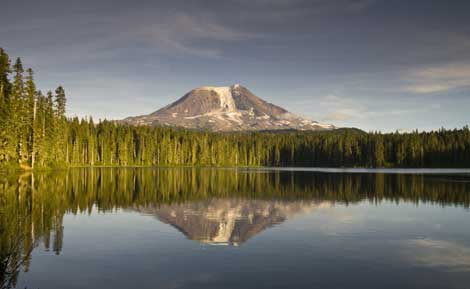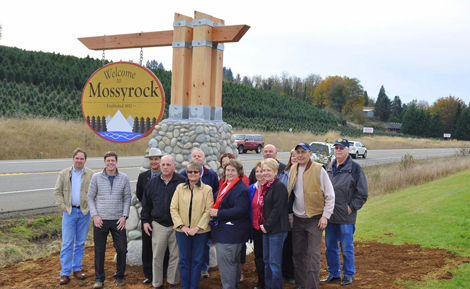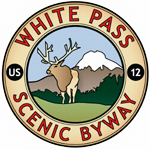Byway Vision
The White Pass Scenic Byway provides an exceptional traveler experience combining improved information and amenities, and vibrant local communities with unique character and hospitality. As the byway becomes better recognized as a travel destination of regional and national significance, more travelers will plan multi-day itineraries to experience the byway.
The byway will be recognized as one of Washington State’s premier wildlife viewing destinations. Wildlife viewing locations like Swofford Pond, Woods Creek , Riffe Lake, Timberwolf Mountain and other locations throughout the byway will be linked to provide wildlife tours for viewing a variety of birds, fish and mammals. The Oak Creek Wildlife area will develop into Washington State’s single best opportunity for a wildlife viewing experience. Following completion of facilities in Naches and at its headquarters, Oak Creek Wildlife area will draw travelers from throughout the region to view the elk, bighorn sheep, birds, and other wildlife that thrive in its diverse habitats.
More and more visitors to Mount Rainier National Park and Mount St. Helens will be attracted to the undeveloped, wilder recreation opportunities available in the White Pass Scenic Byway corridor, and choose the byway as the access to those destinations. Loop trips that include Mount Rainier, Mount St. Helens, and a portion of the byway will be part of more visits, increasing the number of Mount Rainier and Mount St. Helens visitors who also drive the byway and take advantage of byway communities as “base camps” for their trips.
Water-based recreation, including fishing, rafting, and kayaking will continue to be popular, and draw visitors from around the region. A focus on winter recreation will help to maintain the tourism economy throughout the year, as corridor communities provide food, lodging, and services for alpine and cross-country skiers, snowshoers, and snowmobilers.
Regional recreational stakeholders will partner with the Okanogan-Wenatchee and Gifford Pinchot National Forests, and Mount Rainier National park to support their ongoing recreation programs.
Byway communities will benefit from additional tourism revenues, and continue their processes of revitalization. Mossyrock, Morton, Packwood, and Naches will have healthy, walkable downtowns with a variety of restaurants, lodging opportunities, and retail shops that benefit local residents as well as travelers.
The scenic byway management organization, supported by predictable and sustainable operating revenues, will develop and strengthen partnerships with stakeholders agencies and regional recreation and tourism organizations.
Working with many area partners including WSDOT, local governments, and state and local agencies, the byway will contribute to quality of life and quality of the environment throughout the region, growing to be a valued asset for communities, and one of the region’s favorite travel destinations.
Purpose
To promote the intrinsic assets of the Byway’s natural, historical and cultural resources, and enhance the assets and resources located along the Byway and its partner communities.
Goals & Benefits
- Improve the byway visitor experience
- Improve the tourism economy of the byway and its communities
- Protect byway resources
- Develop sustainable byway facilities and organization
Byway Organization
The White Pass Scenic Byway is a non-profit 501c3 organization developed to apply for grants and implement the projects outlined in the Corridor Management Plan. The group meets quarterly rotating meetings along the communities of the byway. It is not a membership organization. The board represents interests along the byway, however participation is open to anyone interested in advancing the mission of the organization.

Board of Directors
Tracy Croshaw, President
Jenn Katz, Treasurer
Devon Bergeron, Secretary
Jessica Scogin
Marketing Program:
Economic Alliance of Lewis County

The Scenic Byway project was developed by a grassroots group of citizens from throughout the corridor. The group created the Corridor Management Plan which focuses on strategies to enhance the corridor and conserve its unique resources. The plan is not a regulatory document, and does not limit any activities allowed on private lands by local planning, zoning, and environmental requirements. The plan focuses on enhancements for the corridor that will provide more opportunities for recreation and tourism, and strengthen an important sector of the local economy.
The Steering committee met from 2003 until 2007 to complete the Corridor Management Plan. A board of directors was appointed in 2007.
